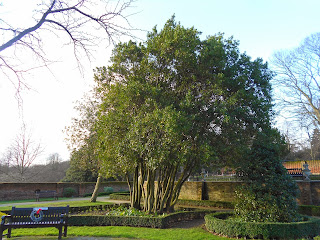Speaking of jokes, here's a few culled from the pages of The Guardian:
A blowfly goes into a bar and asks, "Is this stool taken?"
What do the letters DNA stand for? The National Dyslexia Association.
An electron and a positron go into a bar.
Positron: Your round.
Electron: Are you sure?
Positron: I'm positive.
They have just found the gene for shyness. They would have found it earlier but it was hiding behind two other genes.
Why did the chicken cross the Mobius strip. To get to the other...er - hang on.
A statistician is someone who tells you that if you've got your head in the fridge and your feet in the oven, you are - on average -very comfortable.
There are 10 kinds of people in this world - those who understand binary and those who don't.
A statistician gave birth to twins, but only had one of them baptised. She kept the other as a control.
A weed scientist goes into a shop. He asks, "Have you got any of that inhibitor of
3-phosphoshikimate-carboxyvinyl transferase?"
Shopkeeper: "You mean Roundup?"
Scientist: "That's it. I can never remember that darned name."
A psychoanalyst shows a patient an inkblot, and asks him what he sees. The patient says: "I see a couple having sex." The psychoanalyst shows him a second inkblot, and the patient says: It's another couple having sex." The psychoanalyst says: You are obsessed with sex." What do you mean, I'm obsessed," says the patient. "You're the one showing all the dirty pictures".
I could go on, but you have suffered enough - almost. But with "selfie" being the word of 2013, here goes:
Happy New Year!












































